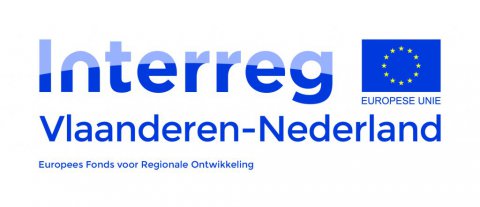Interreg
Interreg Two Seas
Kempens Landschap has played a major role in the Heritage Recycled project launched in 2011. In partnership with the Churches Conservation Trust and Suffolk Mind in England, Kempens Landschap responded to the pressing need to find new uses for redundant heritage buildings. Exemplary projects such as the Ursuline Institute in Onze-Lieve-Vrouw Waver [to the east of Mechelen] and the Church of Saint-Mary-at-the-Quay in Ipswich secured the future of some of Europe’s religious heritage.
The flat land of Northern France, Flanders and the south of the Netherlands boasts numerous fortified towns, including the city of Antwerp with its inner and outer chain of forts. There are still vestiges of extremely important fortifications on the east coast of England too. These days these former military sites offer excellent potential for recreation and leisure, many of them being in or in the vicinity of towns. Together the partners looked at the landscaping and ecological aspects of conserving and protecting fortified sites.
So a number of French, English, Dutch and Flemish organizations – including Kempens Landschap -, led by France’s Département du Nord, joined forces and developed a project to enhance these fortified sites and towns in terms of nature, leisure and gentle recreation. The project is appropriately called ‘Walls and Gardens’.
As part of this project and working closely with the Province of Antwerp, Kempens Landschap turned its attention to Duffel fort, one of forts in the outer chain around Antwerp. Dubbed the ‘railway fort’ because it was built to defend the Brussels-Antwerp railway line, it is unique in design and architecture. It is also home to a colony of some twenty bats. Over a period of three years ‘Walls and Gardens’ took pains to improve the bats’ habitat, to make this nocturnal animal more visible to the general public and to improve access to the railway fort.
Interreg Vlaanderen-Nederland
-
Rambling without borders (2009-2012)
When vzw Kempens Landschap purchased 1,500 hectares of land from the Merode family in 2000, it became the owner of (among other things) the scenic areas of Beeltjens and Kwarekken in Westerlo. These wooded areas used to spill over naturally into each other but when the Asberg through road was built they were cut in two, preventing visitors moving freely from one part to the other. Kempens Landschap created a footbridge which spans the busy through road so that pedestrians can now walk safely from one area to the other. The bridge is a further stimulus to recreation and the nature experience in the Merode and serves as a gateway to the area behind it which is a paradise for walkers.
http://www.grenzelooswandelen.eu/1/grenzeloos-wandelen
-
Social Innovation – Maintaining 'small religious heritage'(SIRE) (2010-2014)
The Kempen boasts a wealth of chapels, crosses and other examples of what is dubbed ‘small religious heritage’. However, their presence in the landscape is frequently taken so much for granted that their maintenance is overlooked. So in 2009 we became involved in the SIRE project, which aimed to develop a new management structure that is concerned with the sustainable maintenance of and access to small religious heritage in several regions of Flanders and the Netherlands. The first step was to allocate a social workplace where overdue conservation work could be carried out. Work to inventorize items of small religious heritage got under way in the spring of 2010, the necessary repair and restoration works started in the autumn of 2011. On the basis of the inventory, in 2012 Tourism Province of Antwerp started developing a tourism and recreation product, which includes a digital bicycle trail.
-
Forts and lines, a cross-border perspective (2009-2012)
Duffel fort dates from 1888 and in many respects it is an excellent example of Belgian military architecture in the last decades of the nineteenth century. A management plan and accessibility rules and regulations were drawn up for the fort as part of the INTERREG project and as the best way of guaranteeing the sustainable and integral conservation of the site in the long term. The building was restored and steps taken to improve the fort as the home of hibernating bats. When remodelling and restoring the building, priority was given to retaining and strengthening the multi-functional character of the site.
Interreg NWE
-
Safeguarding heritage and rural economies (SHARE)
In partnership with Merthyr Tydfil, the National Trust, the Nieuwe Hollandse Waterlinie (New Dutch Waterline), the Province of Gelderland and Ille-et-Villaine, a three-year project was launched aimed at the (economic) revitalization of valuable landscapes. The partners met regularly to exchange information and ideas about raising awareness and appreciation of rural culture and heritage, landscape management, restoration and the cost-effective re-use of assets. Kempens Landschap was responsible for developing Wortel and Merksplas colonies. The project expanded sheep-grazing to manage the pastures and provided the financing to restore the Large Farm (Grote Hoeve) in Merksplas colony and the prison in Wortel colony.




